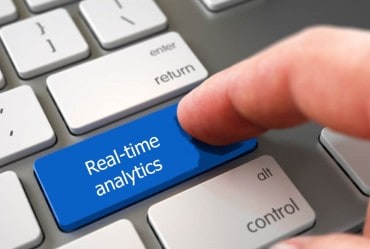
A business intelligence center of excellence can help with various real-time data challenges, including business value, data management, and governance.
How do you resolve the split between business and IT departments when dealing with data?
If you come from the world of traditional business intelligence (BI) and analytics, your first thought may be of the BI Competency Center. Or let’s call it by its more expansive name “Business Intelligence Center of Excellence” — BI CoE — because of its key role as the bridge between business and IT in the realm of data analytics.
The BI CoE has been around a long time. A 2003 Gartner report describes its role as “to champion the BI technologies and define standards, as well as the business-alignment, project prioritization, management and skills issues associated with significant BI projects”. This description, like all others I know, stresses that implementing BI is an ongoing process, managed as a program of projects. Undoubtedly, this basic premise and the resulting roles and activities apply equally to the BI CoE when fast data is prevalent. But, what are the new considerations?
Internal Static Data vs. External Fast Data

From Data Lakes to Fast Data Pipelines
Second, the BI CoE must take a much stronger role than previously in the promotion of real-time analytics discoveries to production. This need arises because of the deepening chasm that data lakes tend to create in data management. In traditional BI, operational and informational environments, while separate, are still closely linked through shared data, common sourcing design and development, and often overlapping teams of users and/or developers. With real-time data projects, we are dealing with new data sources, separate sourcing approaches, and organizational models which often over-emphasize the independence of data scientists. As a result, the path from experimental sandbox to everyday production (wherein lies the real value) is longer and more arduous than for traditional BI. The BI CoE can be instrumental in driving real revenue from real-time data in this area by building better pipes between the data lakes and the operational systems and getting data and value flowing more rapidly.
Business Intelligence Center: Education and Training
A third and, perhaps, shorter term focus for the business intelligence center is on the education and training of data scientists and other denizens of the data lake. Many of these people come from backgrounds where data governance and management principles carry less weight. With a focus on experimentation, statistics and data wrangling, data scientists may fail to appreciate the longer term, expensive remedial work that may be needed to clean up data lakes into which every imaginable data set has been poured and forgotten. The BI CoE can take on a powerful role in education and, perhaps, enforcement to ensure that the good data management principles—that we learned in BI and data warehousing over 30 years—are applied.
Related:
Fast data and the new biz-tech ecosystem
How automated decisions will change BI roles
Want more? Check out our most-read content:
White Paper: How to ‘Future-Proof’ a Streaming Analytics Platform
Research from Gartner: Real-Time Analytics with the Internet of Things
E-Book: How to Move to a Fast Data Architecture
The Value of Bringing Analytics to the Edge
Preventing Downtime With Predictive Analytics
IoT Hacking: Three Ways Data and Devices Are Vulnerable
Liked this article? Share it with your colleagues!





























